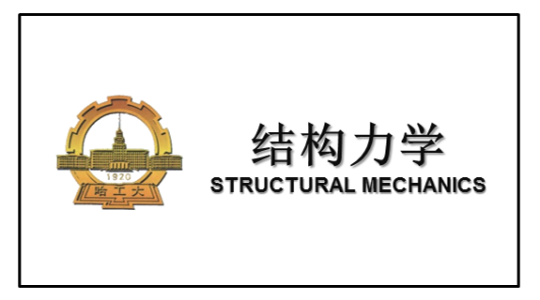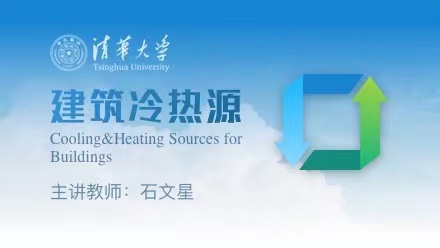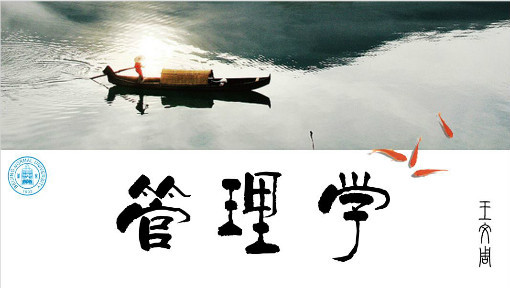
当前课程知识点:Diagnostics in Chinese Medicine > Week 6 Diagnosis methods: Inquiry (2) > 5.6 Inquiring of sleep > 5.6 Inquiring of sleep
返回《Diagnostics in Chinese Medicine》慕课在线视频课程列表
返回《Diagnostics in Chinese Medicine》慕课在线视频列表
同学们好 下面我们学习中医问诊之问睡眠
睡眠是人体适应自然界昼夜节律性变化
维持机体阴阳平衡协调的重要生理活动
首先来学习一下睡眠的机理
中医认为
睡眠与卫气的循行和阴阳的盛衰有关系
白天 卫气行于阳经
阳气盛则苏醒
夜晚
卫气行于阴经 阴气盛则睡眠
卫气在阳经和阴经正常的运行
以保持睡眠的正常
我们用一个图来表示
当我们睡觉的时候
体表卫阳入里
体表则出现正常的空虚状态
因此睡觉的时候 体表阳气不足
所以当我们睡觉的时候 一定要盖好被子睡觉
以保护空虚的体表
睡眠时 阳气入里
体内的富有营养的阴液
可以提供给阳气的营养
让阳气在人体睡眠的时候 养精蓄锐
当第二天苏醒的时候
卫阳出表
再保护人体
阳气入里则睡觉
阳气出表则苏醒
阳气在体表和体内运行
完成人体睡眠和苏醒的正常的交替
卫气的循行和人体内阴阳盛衰有关
还与气血盈亏 以及心肾功能有关
当气血充盛 心神得养
以及心肾相交 肾阴充足
心火不至于亢盛 则神有所舍
这样睡眠才能够保持正常
所以我们问睡眠
不仅可以了解人体阴阳气血的盛衰
还可以了解心 肾等脏腑功能的强弱
问睡眠时 需要问睡眠的长短
入睡的难易程度
以及 有没有做梦
首先我们来学习 第一个内容 就是失眠
这是临床上非常常见的一个症状
失眠又称不寐 或不得眠
是指经常不能入睡
或者是非常容易苏醒
醒后不能再睡
或者眠而不酣 睡得不踏实
容易惊醒 甚至彻夜不眠
兼有多梦的表现
失眠总病机
可以概括为 阳盛和阴虚
我们用图表来说明
我们已经学习过阴阳的关系是互根互用 相互制约的
当人体阴阳平衡 阳气入里则睡觉
阳气出表则苏醒
阳气正常的入里和出表
维持人体睡眠和苏醒正常
但是 如果阳盛
或者阴虚阳盛
就会表现为失眠的状态
比如
睡觉时 阳气入里 当阳气亢盛
体内阴阳不平衡
多余的阳气不能被阴液所制约
而阳气的运动趋势
总是向上向外的
因此 亢阳出表
就会表现出失眠的症状
另外
阴虚 阳偏盛
同样也是阴液不能够制约亢阳
导致了多余的亢阳出表 而表现出失眠的症状
阳盛 以阳气的绝对亢盛为主
阴虚 以阳气的相对亢盛为主
都会导致 阳不入阴
而出现失眠的表现
所以临床上的失眠
主要以阳盛为主或阴虚为主的两种病理变化
阳盛为主
通常见于心火旺 肝火旺 痰热扰心
或者饮食积滞等等
这些阳盛的因素会上扰心神
导致心神不安而失眠
如果心烦不眠 躁扰不宁 怔忡
口干舌燥 小便短黄
口舌生疮 这是心火亢盛的表现
如果失眠 伴随有情绪急躁 多梦
而且这个梦 常常以噩梦为主
通常会伴有头晕头胀
目赤耳鸣 口干而苦 大便干结 小便黄
这是肝火旺盛的表现
如果失眠 同时伴随有胸闷心烦 恶心呕吐 嗳气
伴有头晕目眩
口苦 舌红苔黄腻
这是痰热扰心的症状
如果失眠 同时伴有脘腹胀满
胸闷嗳气 嗳腐吞酸
或者是恶心呕吐 大便不爽等等
这是饮食积滞引起的失眠
以上这四种 均是以阳气绝对旺盛为主的实证
其中心肝火旺是阳盛最常见的病机
阴虚最常见的病机是阴虚火旺
它是由肾阴虚 心火亢盛导致的失眠
这种失眠 以心烦 失眠
心悸不安为主要表现
同时伴有腰膝酸软 头晕耳鸣
健忘 遗精 口干 津少 五心烦热
舌红少苔 脉细数等等阴虚火旺的症状
另外 心血亏虚 心神失养
也会导致失眠
它会见到彻夜不眠 或者 多梦易醒
心悸健忘 神疲食少 头晕目眩
伴有四肢倦怠 面色少华 舌淡
苔薄 脉细无力等症状
另外还有一种比较特殊的虚证失眠病机
就是心胆气虚
这种失眠通常与胆子小有关系
常伴随着胆怯心惊 遇事易惊
容易因为一点点恐惧和害怕的事情
就睡不着觉
同时伴有气短自汗 倦怠乏力 舌淡
脉弦细等气虚的症状
这是心胆气虚 心神不安 表现出来的失眠的症状
以上是关于失眠的病机及临床意义的内容
下面我们来学习嗜睡
嗜睡 是指不论昼夜睡意很浓
经常不自主地入睡
呼之即醒 醒后又睡的症状
根据阴阳互根互用 及相互制约的原理
嗜睡总病机可概括为
阳虚 或者 阴盛
同样的道理
正常的卫阳在人体体表和体内运行的时候
出现苏醒和睡眠的状态
但是如果阳虚
阳气入里则睡眠
由于体内的阴液并没有亏虚 而能够制约阳气
所以
入里的阳气 再也不能出表
而表现出一直睡眠 或者嗜睡的状态
而如果 阳气并没有不足
但阴却亢盛
这个亢盛的阴 通常是指的痰湿内盛非常明显
阴盛
则使进入体内的阳气被制约
同样也不能够外出
而表现出嗜睡的症状
所以阳气虚弱的阳虚证
或者是痰湿内盛的阴盛证
都可以使阳入阴而不能出表
从而表现出嗜睡的状态
所以我们概括嗜睡总病机 就是阳虚和阴盛
阴盛为主的嗜睡 主要见于痰湿困阻脾阳证
除了嗜睡的表现之外
还会见有胸闷 身重 食欲不振
尤其是吃饭之后特别容易困倦
很想睡觉
由于脾阳被困 不能运化 还会表现出 大便稀溏
以及痰多 舌苔白腻等等症状
这是由于清阳不升 清窍失养
所导致的嗜睡
阳虚为主的嗜睡
通常见于中气不足 脾失健运
或久病正虚 或心肾阳虚等证
阳虚嗜睡的人通常见于年老体弱的病人
除了嗜睡之外 还会表现出 神疲乏力 食欲不振
少气懒言 多汗 畏冷肢凉
舌苔白润等症状
这是由于阳气亏虚 失于振奋
而导致的嗜睡
以上是嗜睡的病机和临床意义
本节课主要讲述了
失眠和嗜睡的总病机和临床意义
本节课就讲到这里
-Introductory remark
--QQ groups、WeChat public account
-Introduction
--【Discussion 1】Why do you want to take this course?
-Unit test for Introduction
-1.1 Yin-yang theory
-1.2 The theory of five elements
--1.2.1 The theory of five elements
--1.2.2 Application of the theory of five elements
-Frequently Asked Questions
-Unit test for week 1
-2.0 Outline
--【Discussion 2】How to understand the holistic view centered on the Zang Fu theory?
-2.1 Liver
--【Discussion 3】Why is repose more important than vigorous exercise in recuperation for patients with
-2.2 Heart
-2.3 Spleen
-2.4 Lung
--2.4 Lung
-2.5 Kidney
-2.6 Six fu organs
-Frequently Asked Questions
-Unit test for week 2
-3.1 Qi
--3.1 Qi
-3.2 Blood
-3.3 Body fluid
-3.4 The relationship of qi, blood and body fluid
--3.4 The relationship of qi, blood and body fluid
--【Discussion 4】A discussion about the theory of qi, blood and body fluid
-Frequently Asked Questions
-Unit test for week 3
-4.0 Outline
-4.1 Six exogenous factors
--4.1.2 Nature and pathogenicity of wind and cold
--4.1.3 Nature and pathogenicity of summer heat and damp
--4.1.4 Nature and pathogenicity of dryness and fire
-4.2 Etiology of visceral impairment
--4.2 Etiology of visceral impairment
-Frequently Asked Questions
-Unit test for week 4
-5.0 Outline of inquiry
--【Discussion 5】If you were a patient, how would you describe your condition to your doctor first?
-5.1 Inquiry of Chills and fever
--5.1.1 Chills and fever(Aversion to cold with fever)
--5.1.2 Chills and fever(Chills without fever)
--5.1.3 Chills and fever(Fever without chills)
--5.1.4 Chills and fever(Alternative chills and fever)
--【Discussion 6】How to understand "if you have clinical manifestations of cold, that is exterior syndr
-5.2 Inquiry of perspiration
-Frequently Asked Questions
-Unit test for week 5
-5.3 Inquiring of pain
--【Discussion 7】How to understand "stagnation leading to pain and innourish leading to pain"?
-5.4 Inquiring of head, body, thorax and abdomen
--5.4 Inquiring of head, body, thorax and abdomen
-5.5 Inquiring of ears and eyes
--5.5 Inquiring of ears and eyes
-5.6 Inquiring of sleep
-5.7 Inquiring of food and drink, appetite and taste
--5.7 Inquiring of food and drink, appetite and taste
-5.8 Inquiring of defecation and urination
--5.8.1 Inquiring of defecation
--5.8.2 Inquiring of urination
-5.9 Inquiring of infantile and women's disease
--5.9 Inquiring of infantile and women's disease
-Unit test for week 6
-6.0 Outline of Observation
--【Discussion 8】Please use the whole body inspection (including the expression, complexion and figure)
-6.1.1 Observation of vitality
--6.1.1 Observation of vitality
-6.1.2 Observation of the color
--6.1.2.1 The content, principles of inspection of the color
--6.1.2.2 Indication of diseases by five colors
--【Discussion 9】How do you understand the normal complexion of a normal people?
-6.1.3 Observation of the appearance
--6.1.3 Observation of the appearance
-6.1.4 Observation of figure and posture
--6.1.4 Observation of figure and posture
-Unit test for week 7
-6.2.1 Observation of head and face
--6.2.1 Observation of head and face
-6.2.2 Observation of five sensory organs
--6.2.2.1Observation of five sensory organs(observation of eyes,ears,nose)
--6.2.2.2Observation of five sensory organs(observation of lips,teeth and gums,throat)
-6.2.3 Observation of body
-6.2.4 Observation of limbs
-6.2.5 Observation of two lower orifices
--6.2.5 Observation of two lower orifices
-6.2.6 Observation of skin
-6.3 Observation of excreta
-6.4 Observation of infantile fingerprints
--6.4 Observation of infantile fingerprints
-Frequently Asked Questions
-Unit test for week 8
-7.1 Outline of tongue inspection
--7.1.1 The morphology and structure of the tongue
--7.1.2 The principle of tongue examination
--7.1.3 The method and precaution of tongue examination
--7.1.4 The content of tongue examination, normal tongue
-7.2 Inspection of tongue structure
--7.2.1 Observe the color of tongue
--7.2.2 Observe the shape of tongue
--7.2.3 Observe the states of tongue
--7.2.4 Observation of sublingual vein
-7.3 Observation of tongue coating
--7.3.1 Observation of coating texture
--7.3.2 Observe the color of coating
-7.4 Clinical significance of tongue diagnosis
--7.4 Clinical significance of tongue diagnosis
--【Discussion 10】Why to observe the tongue can be used to diagnose disease?
-Unit test for week 9
-8.1 The principle of pulse examination
--8.1 The principle of pulse examination
-8.2 The regions and methods of pulse examination
--8.2 The regions and methods of pulse examination
-8.3 The elements of pulse examination and the normal pulse
--8.3 The elements of pulse examination and the normal pulse
-8.4 Characteristics and significance of pulse
--8.4.1 Superficial pulse, deep pulse, slow pulse, rapid pulse
--8.4.2 Surging pulse, thin pulse, long pulse, short pulse
--8.4.3 Feeble pulse, forceful pulse, slippery pulse, uneven
--8.4.4 Taut pulse, tense pulse,soggy pulse, moderate pulse
--8.4.5 Knotted, slow-regular-intermittent, irregularly abrupt
-8.5 Similar pulse, concurrent pulse, pulse indicating deterioration of visceral qi۞
--8.5 Similar pulse, concurrent pulse, pulse indicating deterioration of visceral qi۞
--【Discussion 11】Why is complex pulse more common than single-factor pulse?
-8.6 Women’s pulse, children’s pulse
--8.6 Women’s pulse, children’s pulse
-8.7 The clinical significance of pulse diagnosis
--8.7 The clinical significance of pulse diagnosis
-Unit test for week 10
-9.1 Listening
-9.2.1 Abnormal sound
-9.2.2 Abnormal language
-9.2.3 Respiratory abnormality
--9.2.3 Respiratory abnormality
-9.2.4 Cough
--【Discussion 12】How to observe the patient's cough sound and sputum changes to determine whether the
-9.2.5 Abnormal sounds of the stomach and intestines
--9.2.5 Abnormal sounds of the stomach and intestines
-9.3 Smelling
--【Discussion 13】How to diagnose by smelling?
-Unit test for week 11
-10.1 The method, meaning and precautions of palpation
--10.1 The method, meaning and precautions of palpation
-10.2 Contents of palpation
--10.2.1 Palpating chest and hypochondrium
--10.2.2 Palpating stomach and abdomen
--10.2.4 Palpating hands and feet, palpating acupoints
--【Discussion 14】How to determine whether external or internal injuries?
-Unit test for week 12
-Conclusion
-Final Exam
--Final Exam


